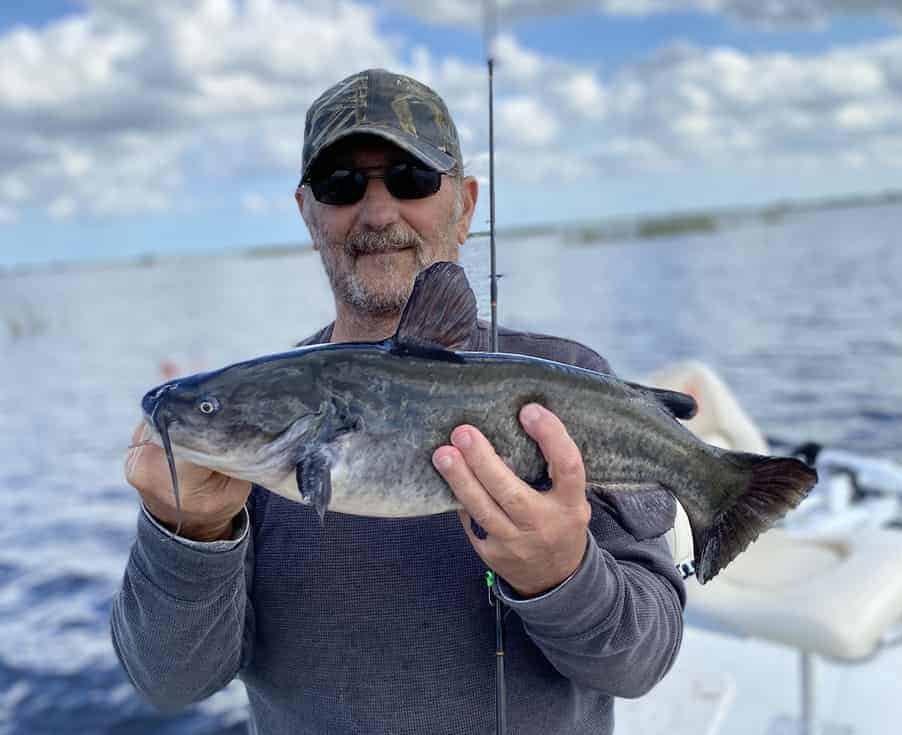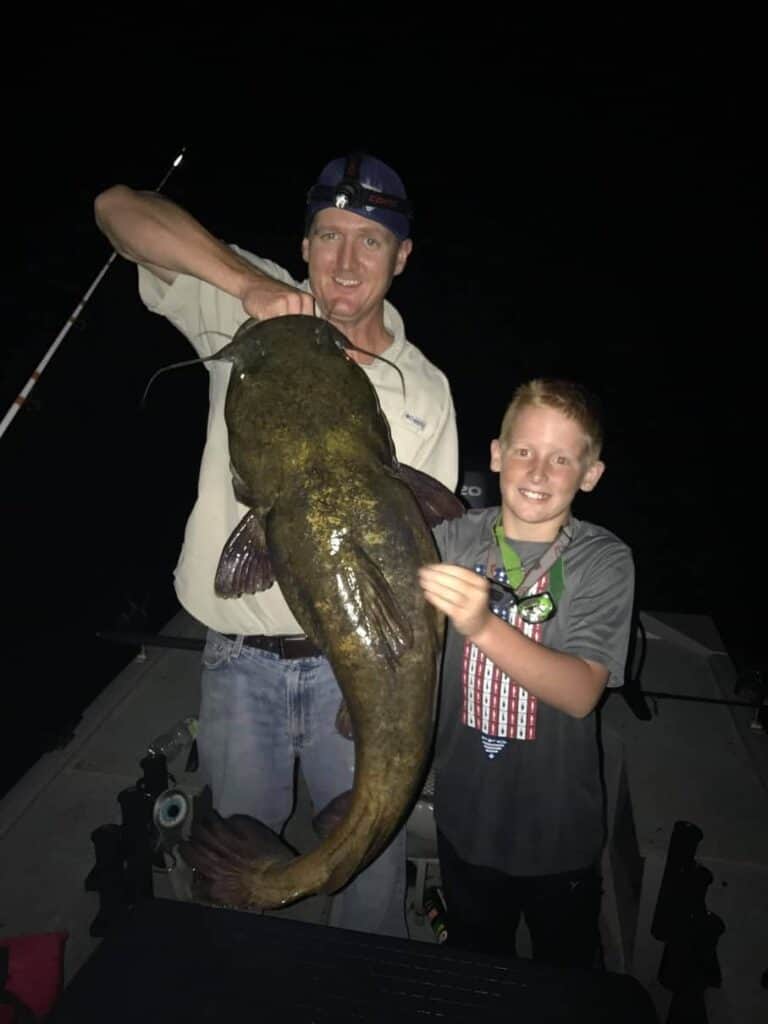
If you have been fishing long enough, you may have heard rumors and stories of old-timers catching catfish on secret bait recipes made of…soap! Yes, soap.
Well, I’m here to tell you that the rumors are in fact true. Fishing for catfish with soap DOES work, and in this article, I’m going to give you the secret to create your own catfish soap bait to take your catch rates to the next level.
This page contains affiliate links. As an Amazon Associate, I earn from qualifying purchases.
Table of Contents
Soap Bait Ingredients
There are many different ways to create your own homemade catfish bait soap recipe. And experimenting with different varieties and scents is half the fun!
In this recipe, I’m keeping it simple with safe & easy ingredients you can find practically anywhere or easily order online.
The quantities below are enough to make about 7 pounds of catfish soap bait or approximately 225 one-inch cubes!

- 6 pounds Ivory Soap
- 12-14 ounces of bacon grease or lard
- 1/2 pound cheese powder
- 2-4 ounces Anise oil
- 8 cups cold water
Note: Feel free to change out the cheese powder with other flavorings and scents. Any binding powder used in cooking can be substituted such as shrimp powder, garlic powder, etc.)
Catfish Bait Soap Recipe
Step 1
Begin by melting 6 pounds of ivory soap in a large pot on low-medium heat. As soap begins to melt, stir to assist in the melting process.
Try cutting the soap into smaller chunks to speed up the process (you can use a thin wire or dental floss to cut the soap bar into small chunks).
Step 2
Once the soap has melted evenly, add in bacon grease or lard, cheese powder, and 4 cups cold water. Mix thoroughly on low-medium heat.
Depending on how much water is absorbed, you may need to add more. The goal is to get the soap mixture the same consistency as pudding. If it’s too thick and hard to stir, add another cup of water.
Repeat this process until all ingredients are thoroughly mixed and pudding-like consistency is achieved.
Step 3
The last step is to add in the Anise oil. Do this step last so that it is not boiled or cooked out. Mix thoroughly and remove from heat.
Step 4
While the mixture is still hot, pour it into your cooling container(s). This is where the bait will cool and harden.
You can use an old casserole dish, ice cube trays, old milk cartons, large tupperware containers, or even baking pans. Anything to let the mixture cool off, try not to pour it more than two inches thick.
Let the mixture cool for a full 24 hours. If you in a hurry and have room in the freezer you can freeze it until hard.
Step 5
After the mixture has sufficiently cooled off and hardened, the last step is to simply cut it into cubes or ‘bait-sized’ chunks. I like to use chunks that are about the size of a sugar cube (3/4″ x 3/4″).
Thats it! Your ready to go fishing. Keep you catfish bait in the refrigerator or freezer to keep it fresh. I like to keep mine in the fridge and just take what I need when I go fishing for the day.
Using Soap as Catfish Bait
Using homemade soap as catfish bait works best with passive forms of fishing such as trotlines or jug lines.
This is because the scent and oils from soap baits takes time to disperse into the water and attract catfish. Overnight is usually long enough to determine if there are any catfish in the area.
The benefit of using a soap bait is that your not likely to get bites from other incidental fish or turtles like you do with shad or other traditional catfish baits.
Always consult with your local fish and wildlife agency to determine the rules and regulations for using trotlines, juglines or fishing in your area.
Frequently Asked Questions
When to use soap for catfish bait?
Using soap for catfish bait works best in the warmer months. Those hot summer days especially, when no other baits seem to work.
What kind of soap is good for catfish?
Ivory Soap, Zote Soap, P & G Soap, or any other basic white bar soap can be used to catch catfish.
What is the best homemade catfish bait?
Ask 10 different catfish anglers and you will get 10 different answers. The best homemade catfish bait is whatever works best in your area. The most common homemade catfish baits are made from beef, cheese, soap, liver and fish. These are often mixed with lard or animal fat and a strong scent such as garlic, anise, shrimp, anchovy, or vanilla.
What about lye soap for catfish bait?
Lye is often used in making homemade soaps, and can be used to make homemade catfish baits but always exercise caution. Lye can be very dangerous if inhaled or if it comes in contact with skin. There are plenty of effective homemade catfish baits that do not use Lye.
What are catfish attracted to?
Catfish primarily hunt along the bottom and have an excellent sense of smell due to their sensitive barbels (whiskers). Scents such as blood, liver, fish oil, vanilla, anise, beef, and pork are all used to attract catfish.
What about using bluegill as catfish bait?
Some species of catfish, such as the Flathead catfish and Blue catfish prefer to eat small live bait, such as bluegill. Soap baits work best on channel catfish, white catfish and various species of bullhead catfish.
Conclusion

If you love to run trotlines, jug lines, or bush hooks consider making your own homemade catfish bait soap recipe.
There is something very rewarding about marking your own bait and then catching a mess of fish. And, it can be a lot cheaper in the long run than buying commercial stink baits or blood baits.
Ya never know, you may stumble on the ultimate secret recipe that works like a charm! Thanks for reading and good luck the next time you’re out on the water.
